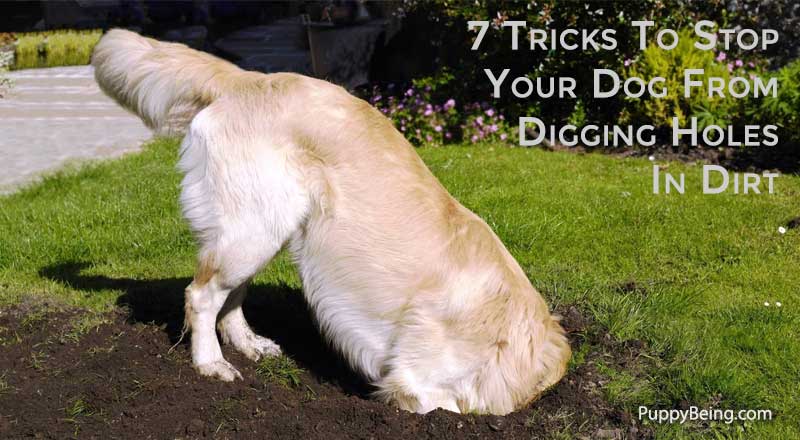As dog owners, we cherish the boundless joy our canine companions bring into our lives. However, their enthusiastic digging can leave unsightly holes in our yards, marring the aesthetic appeal and potentially posing hazards. Fear not, for with a little elbow grease and clever techniques, you can restore your lawn to its pristine glory and safeguard it from future canine excavations.

Image: dogshint.com
Understanding the Canine Excavation Conundrum
Dogs dig for a myriad of reasons, ranging from instinctual behaviors to boredom and anxiety. Understanding their motivations can help you tailor your repair and prevention strategies. Some common reasons for canine excavation include:
- Hunting or scavenging buried objects, a remnant of their wild ancestors’ behavior.
- Seeking relief from heat by creating cool, shady spots in the ground.
- Expressing frustration or boredom when left unattended or understimulated.
- Hiding prized possessions, such as toys or treats, for safekeeping.
- Escaping confinement in search of adventure or companionship.
Reclaiming Your Lawn’s Beauty: A Step-by-Step Guide to Hole Repair
With a clear understanding of the reasons behind dog-dug holes, let’s delver into the practical steps to restore and protect your yard:
Step 1: Leveling the Playing Field
- Carefully fill the hole with dirt, taking care not to overfill it.
- Use the flat side of a shovel or a tamping tool to compact the dirt firmly, creating a smooth and level surface.

Image: puppybeing.com
Step 2: Selecting the Ideal Turf Solution
- Choose a grass type that is durable and resistant to dog activity, such as fescue, ryegrass, or bluegrass.
- Consider using a sod cutter to remove a patch of grass from a healthy area of your lawn and transplant it into the repaired hole.
Step 3: Seed and Water for a Verdant Rebirth
- Sprinkle grass seed over the repaired area and lightly rake it into the soil.
- Water the area thoroughly, keeping it moist but not waterlogged.
- Expect germination within 7-14 days, depending on the grass type.
Step 4: Establishing Root Systems for Lasting Success
- Avoid walking on or mowing the repaired area until the grass has fully established and developed strong root systems.
- Provide adequate watering, especially during the first few weeks of growth.
- Gradually introduce your dog to the repaired area once the grass has taken root.
Preventing Canine Excavations: A Proactive Approach
Beyond repairing the damage, it is equally important to prevent future hole-digging endeavors by your canine companion. Here are some effective strategies to keep your lawn intact:
- Enrich Your Dog’s Life: Provide ample exercise, mental stimulation, and companionship to minimize boredom and frustration, reducing the likelihood of digging out of sheer restlessness.
- Designated Digging Zone: Create a specific area in your yard where digging is permitted and encourage your dog to use it through positive reinforcement.
- Olfactory Deterrents: Dogs have a keen sense of smell, so consider using natural repellents such as citrus peels, vinegar, or cayenne pepper around the areas you want to protect.
- Physical Barriers: Install underground fencing or place large rocks in the areas where your dog tends to dig, making it physically challenging for them to excavate.
- Motion-Activated Sprinkler: Invest in a motion-activated sprinkler that will spray water when your dog approaches the designated digging area, creating an unpleasant surprise that discourages further digging.
How To Fix Holes In Yard From Dog
https://youtube.com/watch?v=BN-H6xa6OMk
Conclusion
Repairing dog-dug holes and preventing future excavations require a combination of patience, strategic planning, and love for both your dog and your yard. By understanding the reasons behind your dog’s digging habits, implementing effective repair techniques, and employing preventative measures, you can restore your lawn’s beauty and foster a harmonious coexistence between your four-legged friend and your verdant sanctuary.